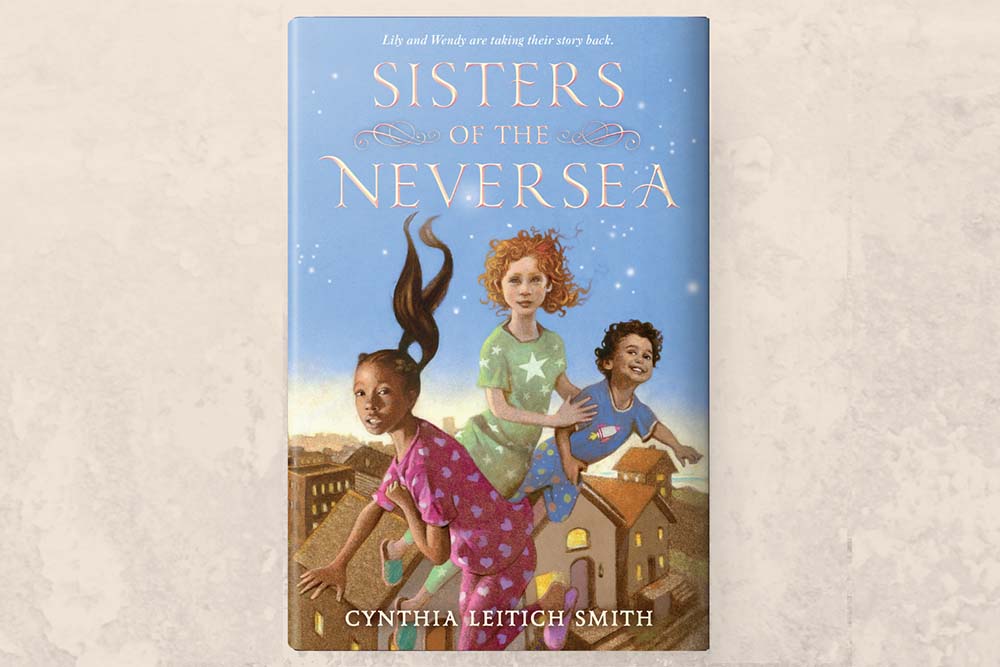
- Details
You’ve heard of Peter Pan, but have you ever read the 1911 classic novel of the same name by J.M. Barrie? Growing up, I adored fantastical stories, but it never occurred to me to reach for that one. Its offensive depictions of Native characters were no secret, and my local library provided me with countless better books to read. That said, none of those better books showcased Native young heroes.
One of my goals is to offer Native kids the kind of stories I wish I’d had a chance to read as a child. The latest of these is a fantastical middle grade novel titled Sisters of the Neversea.
When it comes to children’s books, today’s publishing landscape is increasingly more respectful, authentic, and inclusive. A growing number of talented Native and First Nations writers and illustrators are creating beautifully crafted, page-turning books. In fact, the We Need Diverse Books nonprofit organization has partnered with HarperCollins Children’s Books on a new Native-focused imprint called Heartdrum, for which I’m honored to serve as the author-curator. All we do is publish wonderful books by Native people about Native heroes that will appeal to both Indigenous young readers and to all those who love a good story. After all, a Native hero is a hero that everyone should cheer!
More personally, I’m likewise pleased to have authored contemporary, realistic children’s books like Jingle Dancer, Indian Shoes and Ancestor Approved: Intertribal Stories for Kids. But as much as kids embrace daily-life narratives like those, they also long for glittering magic, unexpected marvels, high-stakes adventure—a panorama of imaginary escapades. They thrill at the thought of storybook pirates, mischievous Merfolk, and glittering fairies. They wish they could fly.
In Sisters of the Neversea, I reimagined the world of J.M. Barrie to lovingly invite in today’s young readers. It’s a new story—centered on stepsisters Lily Roberts (Muscogee Creek) and Wendy Darling (white British American)—that celebrates family, friendship, and, of course, fairy dust.
As for the Native characters on (and off) Neverland, gone are the monosyllabic dialogue, the Hollywood “Old West” stereotypes, and the paper-doll portrayals that insulted Indigenous humanity. Instead, Sisters of the Neversea features modern-day, tribally specific kids. Lily, Wendy, and their little brother Michael hail from a bicultural, blended family in suburban Tulsa, and more broadly, all the Native kids in the book are informed by cultural values and the wisdom of their elders. They come together as an intertribal community to take care of one another and try to rescue themselves and the Lost kids, too. They show respect for the land, the sea, and its original inhabitants. Girls and women are integral, their contributions valued, and, in case you were wondering, they’re not inclined to pine for the affections of a certain flying boy who won’t grow up.
No, Peter Pan doesn’t get a pass, and neither does J.M. Barrie. The toll exacted by problematic narratives and the importance of healing ones is seamlessly integrated into my villain’s character. His arc thoughtfully unpacks that dynamic but also reframes it to ensure brighter days to come.
That’s a peek for the grownups into the story behind the story, a few behind-the-scenes insights from this storyteller, but I certainly don’t expect young readers to consciously pick up on all that.
As for Sisters of the Neversea itself: The book is a rollicking fairy tale! A twenty-first century narrative that says to Native kids and their non-Native friends that they’re all welcome in the world of books. I’m delighted to share that the novel has already garnered starred reviews, which is always encouraging, but I’m most honored by the feedback I received from a Native educator who told me that she could hardly wait to share the book with her grandchildren.
Help us defend tribal sovereignty.
At Native News Online, our mission is rooted in telling the stories that strengthen sovereignty and uplift Indigenous voices — not just at year’s end, but every single day.
Because of your generosity last year, we were able to keep our reporters on the ground in tribal communities, at national gatherings and in the halls of Congress — covering the issues that matter most to Indian Country: sovereignty, culture, education, health and economic opportunity.
That support sustained us through a tough year in 2025. Now, as we look to the year ahead, we need your help right now to ensure warrior journalism remains strong — reporting that defends tribal sovereignty, amplifies Native truth, and holds power accountable.
 The stakes couldn't be higher. Your support keeps Native voices heard, Native stories told and Native sovereignty defended.
The stakes couldn't be higher. Your support keeps Native voices heard, Native stories told and Native sovereignty defended.
Stand with Warrior Journalism today.
Levi Rickert (Potawatomi), Editor & Publisher
